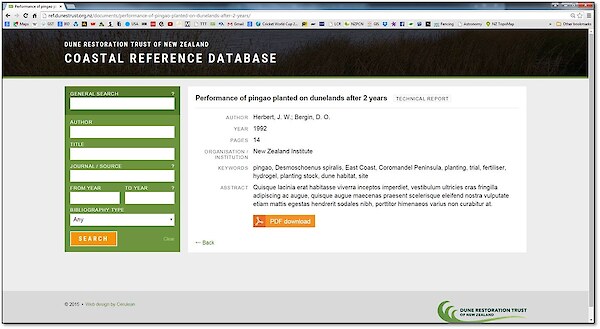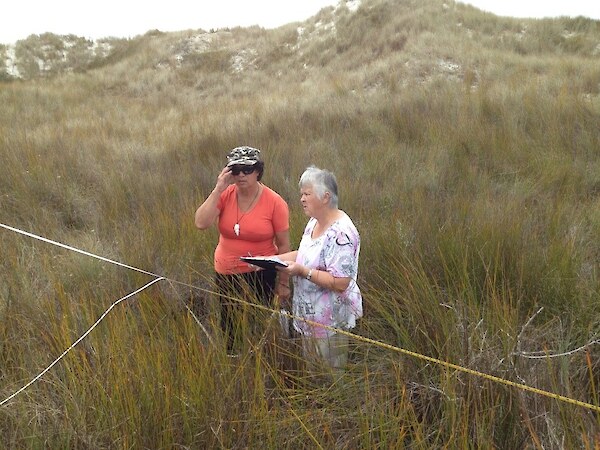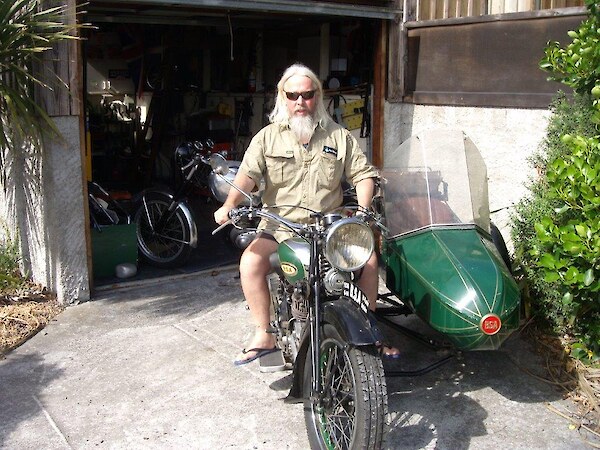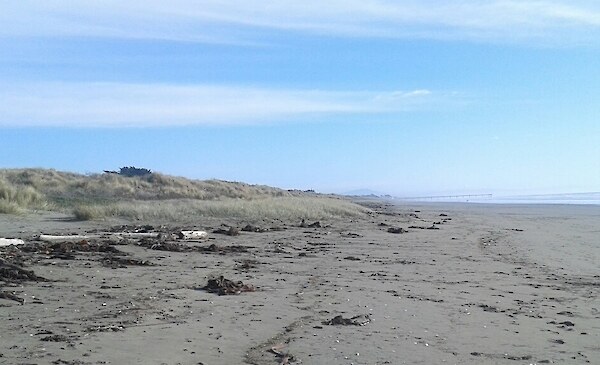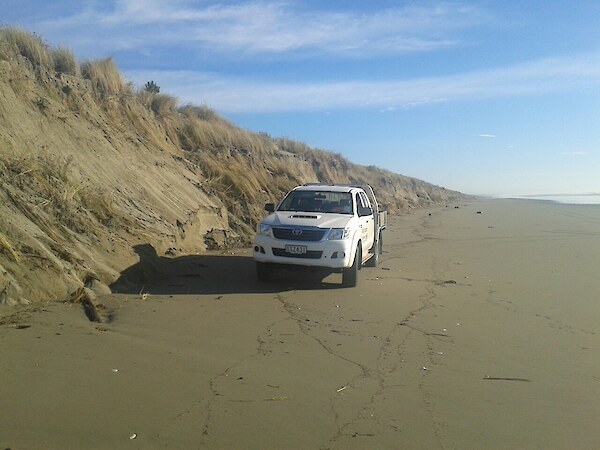The 2015 Conference at Whitianga provided several very interesting field trips, including dunes at Whangapoua that had been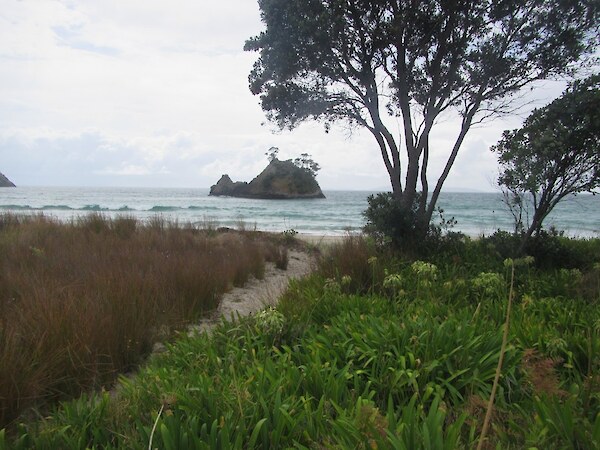 planted recently following physical earthworks. This involved the use of machinery to remove the predominantly exotic vegetation cover, comprising species such as agapanthus, yucca, and blackberry, as well as the top layer of sand (with the weed seedbank). Replanting was done using spinifex and pingao on the foredune, with wiwi and pōhuehue further back.
planted recently following physical earthworks. This involved the use of machinery to remove the predominantly exotic vegetation cover, comprising species such as agapanthus, yucca, and blackberry, as well as the top layer of sand (with the weed seedbank). Replanting was done using spinifex and pingao on the foredune, with wiwi and pōhuehue further back.
However, it is noteworthy that although these sites have been weed-infested, they also nevertheless harbour a relatively diverse range of indigenous plant species, including some species such as Zoysia pauciflora that are now uncommon or even absent from large sections of the New Zealand coast.
One way to avoid the loss of these species from sites where physical works are to be undertaken would be to undertake a pre-works botanical survey to identify the indigenous species present at each particular site. Plants of interest could then be dug out, stored nearby and then replanted at the site when clearing has been completed.
Full text of article and more photos available here.
Thanks to Sarah Beadel of Wildlands Consultants for this article.

